The city of mystery and romance
Rialto Bridge and gondola, two symbols of Venice
- © S.Borisov / Shutterstock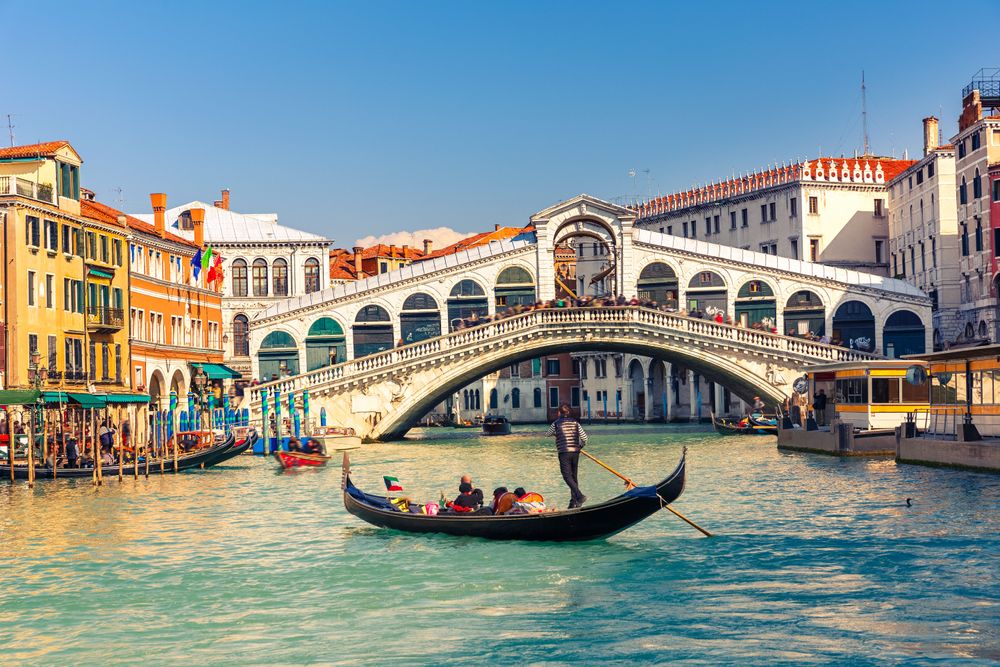
Along the canals, all the treasures of the Serenissima
50,000 tourists every day compared with just 58,000 inhabitants within the city walls, 120 islands, 170 canals, 450 bridges... If Venice were just arithmetic, it would not distil the image of a paradise on water.
And yet it is a paradise, despite the crowds from all over the world, a hotel industry where prices can triple overnight (the difference between 'low season' and 'high season' prices depends more on demand than on the calendar) and a capricious climate (a furnace like in Naples, floods like in the Po delta, fog like in Turin).
Seen and re-seen a thousand times on television and in the cinema, dreamt of and imagined in the countless books and paintings in which it is the setting when it is not the main character, Venice is rarely neutral ground for the visitor setting foot there for the first time.
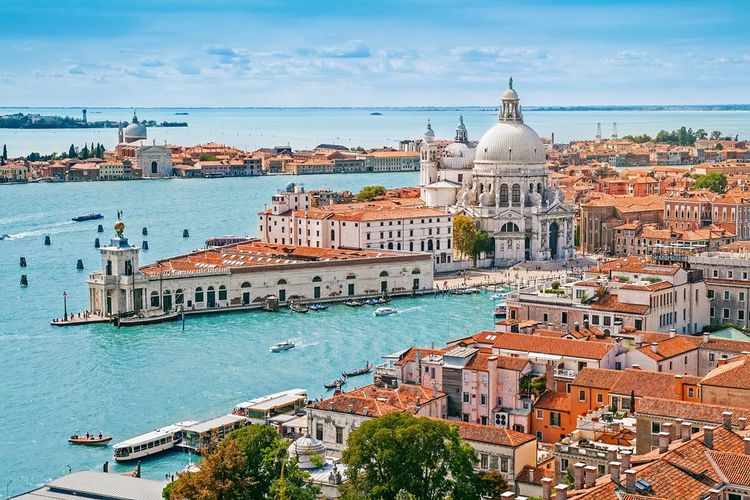
An incomparable setting: the Venice lagoon
- © Pani Garmyder / ShutterstockIt's a city that you look forward to, that disappoints and amazes, and that invariably ends up seducing you at the corner of an alley with a macaron, a perspective, a scene that stands out in this incredible compendium of art and history that constitutes the very soul of the city.
Venice can be tamed. For some travellers,it's love at first sight. For others, the dilapidated state of this city, which saw its heyday in the 15th century, is an obstacle to overcome. But everyone ends up finding their own Venice...
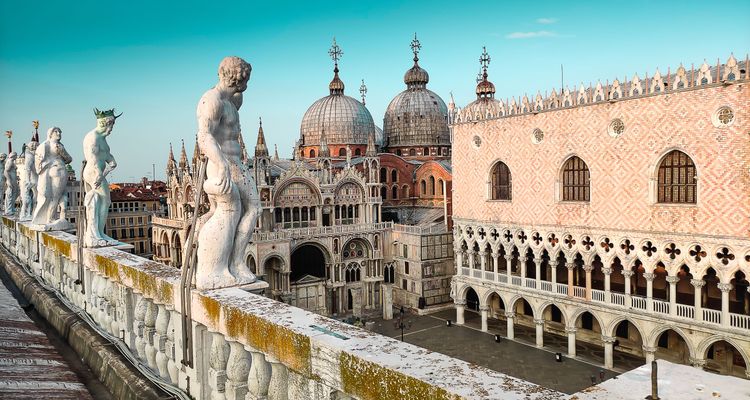
St. Mark's Square
- © cineuno / ShutterstockThe streets (calle in Venice) wind around the ancient and sometimes crumbling palaces, along the canals, and open up to the light of a square (campo). Piazza San Marco is fascinating, with its eponymous Basilica, the Doge's Palace, the Clock Tower and its cobbled surface sometimes covered by the sea... it's the heart of Venice, symbol of its past power and present-day tourist appeal.
During the period of the Serenissima, Venice welcomed Byzantine influences, was enriched by them and knew how to cultivate a particular current in the flourishing heterogeneity of Renaissance art in Italy. Titian, Veronese and Tintoretto captured the atmosphere of the city and its colours on their canvases. These are just some of the masters whose footsteps we must follow, through the churches, palaces and museums, to find the soul of Venice.
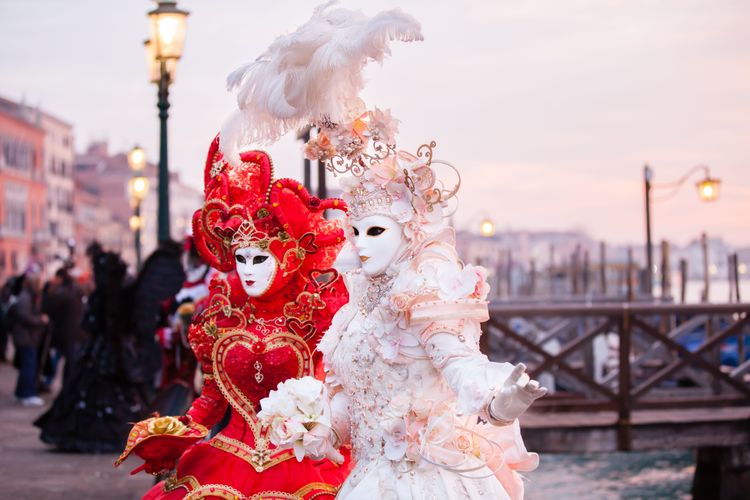
The Carnival of Venice
- © Deborah Kolb / ShutterstockIn Venice, a city flush with water in its lagoon, nothing is quite the same as elsewhere: you can travel by vaporetto or gondola, and wade in the water when theAqua Alta floods the streets for a few hours. This setting, which imposes a unique lifestyle, hosts events that are just as unique, such as the Venice Carnival and its masks, the Mostra and its Golden Lion award-winning films, and the Biennale of Contemporary Art and its creations.
Finally, it's also worth getting lost in Venice to discover the less-frequented places, with the little shops, florists, bars and characters who populate this city so rich in history and stories. Because Venice is not just a museum town overrun with tourists, as long as you venture into the authentic districts and take the time to linger a while...
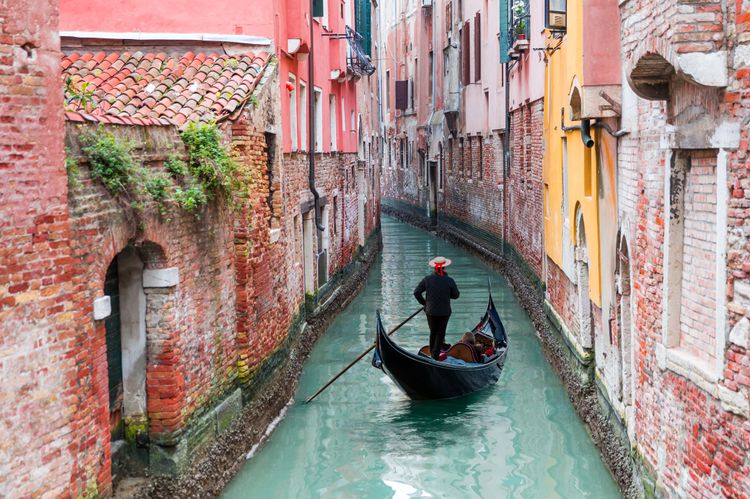
The secret canals of Venice.
- © muratart / ShutterstockHow to get there?
The proliferation of low-cost flights means that air tickets can be found at very reasonable prices, but it is still advisable to take a close look at the flight+hotel packages offered by tour operators, which can sometimes save you money. Venice-Marco Polo airport is the closest to the city.
✈️ Compare flights to Venice
Find the best flight deals for VeniceWhere to stay?
To make sure you don't miss out on a visit to this unique city, it's really best to book your accommodation before you arrive, and to stay in the heart of Venice.
In fact, it's formally inadvisable to quibble about the location of your hotel. Hotels in Mestre are considerably cheaper than those in Venice itself. But when you have to keep an eye on the vaporetto timetable, getting out of the historic setting and back into the industrial suburbs every day, your stay in this unique city just won't be the same. It's better to tighten your belt in other areas.
The Lido is also a little cheaper than Venice itself. Although it has the same disadvantages as Mestre, it still offers a much more pleasant setting and could be a good option if you're in town for a long stay or during the very high season.
Practical information
👉 When should you go to Venice?
For pleasant weather, in April-May and October.
To avoid the crowds, in the middle of winter between November and January.
To see the Aqua Alta (high tide that floods Venice), between November and April.
Beware of the rise in hotel prices around Carnival (February), the Mostra (late August/early September) and the Biennale (June-November, every 2 years).
It can get very hot at the height of summer, but a little less crowded in August.
👉 What are theformalities?
If you are a UK resident, your passport must be valid for at least 6 months beyond your planned departure date from Italy. If you are planning to stay more than 90 days (3 months) you need a visa permit.
When arriving to Italy, British travelers might be also asked to present proof of accomodation, and of sufficient fonds (around £38,55 per day of traveling)
👉 How long should I stay in Venice?
Two days seems the bare minimum, just to see the sights and visit the must-sees. From 5 days onwards, you have time to go into more detail, and discover the islands of the lagoon.
👛Entrance tax in Venice?
An entrance tax of between €3 and €10 (£2,57 - £8,57) has been charged since 2023 for people visiting Venice for the day. If you stay even one night in the municipality (including Mestre), you are exempt: your accommodation must give you a certificate.
👛 Tourist tax in Venice
Starting in 2024, Venice will introduce a new €5 (£4,28) entry fee for day-trippers visiting the city on certain peak days, in an effort to manage overcrowding. This fee must be paid online in advance by all visitors over 14 years old who are not staying overnight.
🚌 Transport in Venice
You mainly get around Venice on foot, so take good shoes.
Public transport is provided by vaporetti, water buses that run along the canals. A ticket costs €9.50: a pass from ACTV, the transport company, can be well worth it (available online with the Venezia Unica pass).
The traghetto is a ferry that allows you to cross the Grand Canal for just €2.
Water taxis are reserved for big budgets.
👉 To avoid: fake gondola tours
You'll see these leaflets everywhere: the Grand Canal in a gondola from €39... Don't buy this fake bargain that will have you touring with 6 people in a black-painted boat and admiring more boats like yours than peaceful palaces along deserted canals.
Instead, treat yourself to a traditional gondola ride (regulated price: 90 euros for 50 minutes by day, 120 euros by night - price per gondola, not per person). Extraordinary when it's not too hot or too cold, when darkness begins to invade the city and the gondolier, silent, takes you through little-frequented canals.
🍴 Venice: what to eat
Real Venetian cuisine won't please every palate: soft crabs, eel, calf's liver with onions... And yet, served at the Corte Sconta restaurant in Calle del Pestrin, in the Castello district, these dishes are delectable. Taste shy? Try the pea risotto or the seafood tagliatelle.
Apart from the gourmet restaurants in the palaces (€30 a dish), there are very few good places to eat in Venice. Here are 2 others in addition to Corte Sconta: Ai Quattro Ferri, calle lunga San Barnaba, in Dorsoduro and Al Covo, campiello della Pescaria, in Castello (€20 a dish).
👉Venice: what to bring back?
Genuine Murano glass is expensive. To find objects (bowls, goblets, decorative figurines) at an affordable price, go to the shops in the shopping streets between Piazza San Marco and the Rialto Bridge.
Alternatively, the glassworks and exhibition and sales galleries of the great names in glass (Venini being the most famous) can be found on the island of Murano (accessible by vaporetto from Venice).
To buy a designer item, head to the island of Certosa (also served by vaporetto). Trainers and students from the European Design Institute exhibit their creations (clothing and decorative objects) here.
⏰ Remember: site and museum closures
Plan your visiting times, as many of Venice's sites and museums close relatively early.
The Academia closes at 7pm (Mondays from 2pm), as do the Doge's Palace (7pm in summer, 5pm in winter) and the Scuola Grande di San Rocco (superb frescoes by Tintoretto invisible from 5.30pm in summer, 4pm in winter). The same goes for the Guggenheim collection (closes at 6pm) and the exhibitions at Palazzo Grassi (closes at 7pm). One of the museums that closes earliest is the Ca' d'Oro (1pm every day).
Visits and transport are expensive in Venice, and tickets quickly add up during a busy stay: to limit the damage, plan your visits in advance and book a Venezia Unica pass, which can be adapted to suit your plans (transport, museums, monuments, etc.).
explore Try out our comparators
It is Easy to travel


